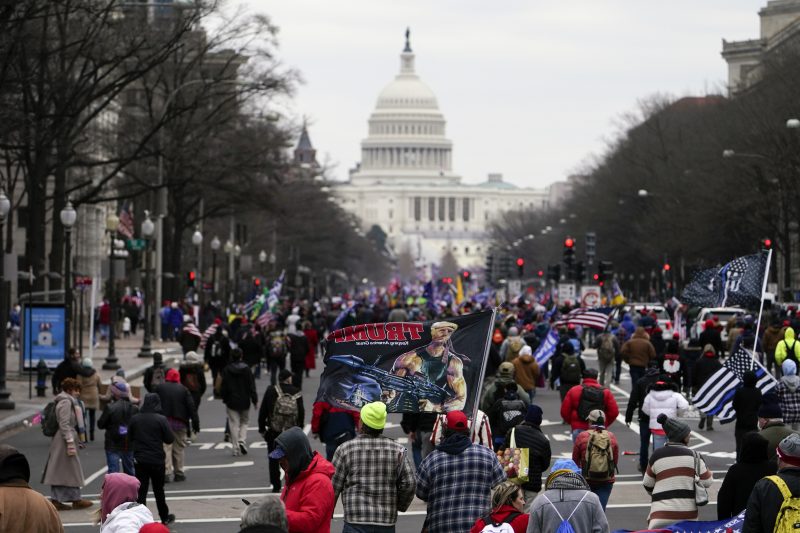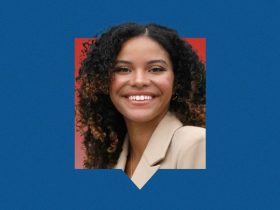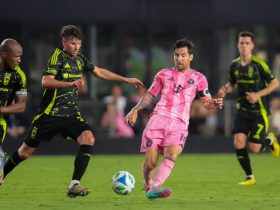There was a scenario in which Jan. 6, 2021, didn’t turn into the infamous day it became.
Even with Donald Trump’s relentless insistence that the 2020 election had been stolen, even with his demand that his supporters come to Washington on that day and even with agitators from extremist groups ready and enthusiastic about triggering violence, there could simply have been a big rally near the White House and some scattered tussling between the police and protesters closer to Capitol Hill. There could — theoretically at least — have just been two things going on that day, a president fuming about his loss and legislators voting to confirm it.
Instead, Donald Trump encouraged his supporters to head to the Capitol, and drove tens of thousands of angry people at a too-small contingent of law enforcement. He knew that people in the crowd had weapons and he knew who they were angry at, but he pushed them there anyway.
Material released by the House select committee investigating the riot, though, shows that some people in Trump’s orbit — including organizers of the day’s events — were worried about publicly endorsing a march or connecting the two events for a variety of reasons. It doesn’t seem that those concerns were passed on to the president.
Attention turned to Jan. 6 on Dec. 19, 2020, when Trump sent an early morning tweet calling on people to come to Washington, pledging that the day would “be wild.” A few hours later, activist Kylie Kremer announced that her group would participate. Her group, Women for America First, had been holding rallies in support of Trump’s false claims about the election in the weeks after the 2020 election. That would include a “march for Trump” in the nation’s capital on Jan. 6.
The calvary is coming, Mr. President!
JANUARY 6th | Washington, DChttps://t.co/kyp7WF8o5r
#MarchForTrump #StopTheSteal pic.twitter.com/A6VkNZPlPx
— Kylie Jane Kremer (@KylieJaneKremer) December 19, 2020
Eventually, Trump would endorse Kremer’s event, which became the rally just south of the White House.
But there were other Trump allies who’d made plans for the day, including fringe activists Alex Jones and Ali Alexander. Alexander, who seized the “stop the steal” mantra as his own, had quickly registered the domain wildprotest.com after Trump’s tweet to promote an event. A felon, he would later seek a permit for a rally on Capitol Hill on the afternoon of Jan. 6 using the name of an invented organization.
To keep everyone happy, plans for Jan. 6 were consolidated. A rally on the evening of Jan. 5 became a place for fringe voices like Jones and Alexander; the Jan. 6 rally outside the White House was trimmed to more respectable Trumpworld figures. Then, according to both the public websites for the events and internal agendas well into January, there would be movement to the Capitol.
As part of the impeachment trial that followed the Capitol riot, Democratic prosecutors noted that there was no permit for a march from the White House to the Capitol. During his remarks to the crowd that day, Trump had nonetheless explicitly called for people to do so. At the time, in early February 2021, I wrote an article wondering where the march idea had originated.
It’s now clear that the march was always part of the discussions about the day. It was only as Jan. 6 approached that some of those involved in planning the events began to be wary about pushing people to the Capitol.
Kremer, for example, told investigators from the House select committee that she was very aware her organization had no permit for a march, though (as their permit acknowledged) it was likely that some people would go from one location to the other.
“People are able to do whatever they want,” she said. “So, if they want to come to the Ellipse and come to the event that is presented by Women for America First and then they want to go to an event with … ‘Stop the Steal’ or whatever, people are free to make their own decisions.”
The permit, she said, was a subject of regular conversation with the National Park Service. She thought this made no sense, as a permit would allow movement to be better controlled and contained. But, she said, “I was being continuously told by NPS that we could not have a permit to march, and if we did or promoted a march, then the Ellipse permit would be revoked, or we would not officially get the final one.”
Internally, though, she and the other organizers knew that a march was expected. She sent a text message to MyPillow CEO Mike Lindell — “This stays only between us” — that there would be a march.
“It cannot get out about the second stage because people will try and set another up and sabotage it,” she told Lindell. “It can also not get out about the march because I will be in trouble with the National Park Service and all the agencies, but POTUS is going to just call for it ‘unexpectedly.’ ”
There were numerous internal alerts among law enforcement organizations about plans for marches in Washington, including several that (according to documents released by House investigators) included thousands of commitments on Facebook. Remember, though, that there was a specific reason for concern about a Capitol Hill rally linked to the Trump speech: Ali Alexander and Alex Jones were already slated to be there, muddying efforts to keep the fringe at a distance.
A few weeks after the election, Alexander, Jones and white nationalist Nick Fuentes occupied the Georgia Capitol with a number of supporters in a demonstration against the election results in that state. Katrina Pierson, an organizer who’d worked with Kremer and who was tapped as the point person for the Jan. 6 events with the White House, understood that Jones and Alexander were a risk.
Trump “knew there was going to be a march going on at the Capitol, and he was going to have his event and … so people were going to the Capitol,” Pierson told investigators. “They had the SCOTUS stage that I believe the Kremers were working on, and then I was told that Ali’s group had a permit for the Capitol.”
“My understanding was the Kremers, they had the way that they wanted the event to work, and Alex Jones and Ali and that other group had other things that they wanted to take place,” Pierson said at another point. “And, again, by that time, the rhetoric did not typically match the message they were trying to send, and they just sort of split their own ways.”
Pierson told investigators that, at a meeting about the events a few days before Jan. 6, she’d tried to steer Trump away from involving Alexander or Jones. That effort was fairly passive-aggressive in her telling, but she recalled that she gave a more forceful warning to White House chief of staff Mark Meadows.
“I probably mentioned to him that they had already caused trouble at other capitols or at the previous event — the previous march that they did for protesting,” she said during a committee deposition. “And I just had a concern about it.”
She wasn’t alone. Tyler Budowich, a member of Trump’s communications team, had warned a colleague about Jones-Alexander pollution. During his deposition with the committee, Budowich was shown a text message in which he stated something to the effect of, “if Alex Jones and the nuts had been speaking, the Capitol would’ve burned.”
“Did it give you any concern when you see here that Ms. Pierson is saying the president’s expectations are to call on everyone to march to the Capitol and Ali’s group would be setting up there at the Capitol?” an investigator asked Budowich. He replied that he didn’t recall Pierson’s comments.
While the committee did find evidence that White House attorneys warned Trump about traveling to the Capitol himself, it’s not clear that he was warned about encouraging a march. Speechwriter Robert Gabriel told the committee that a call to head to the Capitol was in early drafts of Trump’s speech for that morning, apparently not triggering alarm.
Max Miller (newly sworn in as a member of Congress from Ohio) was asked by investigators whether Trump knew a march was part of the plan.
“I mean, he literally — they had sent out the invite, and it said ‘Save America March,’ ” he said with some apparent exasperation. “It’s — I’m not trying to sound how I’m sounding, but it’s more than implied within the title of the rally.”
Dustin Stockton, another of the organizers who had been working with Kremer, nonetheless began publicly describing his shock at Trump’s call for a march even before the House select committee began its work. He claimed to ProPublica that he’d raised concerns about the march with Kremer, who said she’d talk to Meadows about it. He said she told him that “the White House would take care of it,” which he interpreted as meaning that the march would be kiboshed. Obviously, it wasn’t.
When a friend of his tweeted out a flier promoting both Trump’s speech and a subsequent event at the Capitol, Stockton was incensed.
“My reaction was that Ali was violating — because this was within a day or two of us first reluctantly agreeing to help them do the January 5th thing — this guy is already violating, like, the agreement that we put together. And so my assumption is, it was him just going rogue,” he said of the expanded plan. “I’ve since come to think that I may have been wrong about that.”
That seems like the correct assumption. There were warning bells among those close to Trump and those organizing the events about who would be at Capitol Hill. But the day was, in many regards, predicated on a march to the Capitol and Trump’s speechwriters and aides appear never to have dissuaded that idea. Kremer, unable to get the necessary permit for a march — which Stockton purports to have taken quite seriously — went along with the plan to move people to Capitol Hill anyway.
And so they did.








